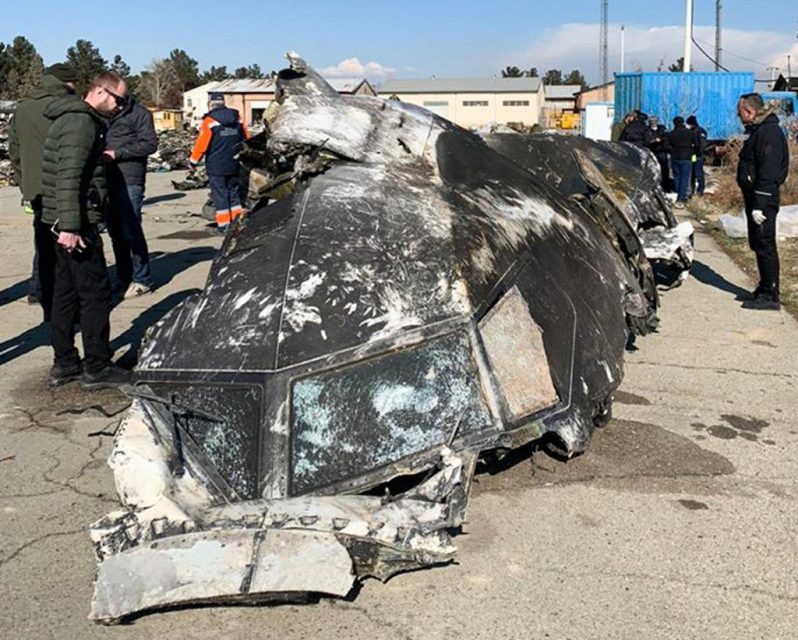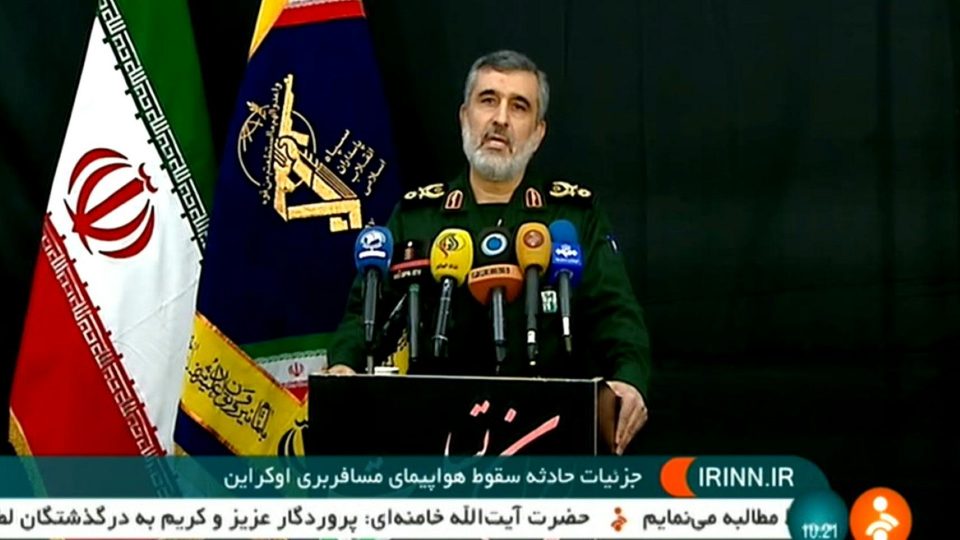

TEHRAN, Iran (AFP) — The aerospace commander of Iran’s Revolutionary Guards on Saturday accepted full responsibility for the shooting down of a Ukrainian passenger jet.
In remarks aired on state television, Brigadier General Amirali Hajizadeh said the missile operator who fired on the plane did so independently because of communications “jamming”.
It came as Iran acknowledged the Boeing 737 had been shot down, after denying for days Western claims that it was likely to have been brought down by a missile.


Here are the main excerpts of his 12-minute explanation:
– ’10 seconds to decide’ –
– Hajizadeh said he first heard of “the heartbreaking incident” while in the west of the country after Iran fired missiles at US troops hosted at Iraqi bases.
– “I take full responsibility and I will obey whatever decision is taken. I would prefer to die rather than witness such an incident.”
– “On the night of the incident, at around sunset, the alert level was at war status, the highest level of readiness.”
– “At various stages, it was reported… that cruise missiles had been fired towards the country, and at one or two stages it was reiterated again that these (missiles) were on the way, be ready.”
– “You see, the systems are at the highest level of readiness. You only need to press the button.”
– “Given the information provided to the (missile) operator that it was a war situation and cruise missiles had been fired, this person identified this as a (missile).”
– “He was obliged to make contact and get verification. The operator’s mistake was this point. But apparently, his communications system had some disruptions. Now either the ‘jamming’ system was the cause or the network was busy or whatever, he couldn’t get in touch.”
– “He had 10 seconds to decide… Unfortunately under these circumstances, he made this bad decision, the missile was fired and the plane was hit and then… it turned and the spot that it crashed at was here,” he said, pointing to a map.
– ‘All-out conflict’-
– Hajizadeh defended the Iran Civil Aviation Organisation after it rebuffed Western claims the plane carrying 176 people had been shot down.
– “First of all, I must say that they were acting in accordance with their own knowledge (of the situation). They were not aware of this incident.”
– “The armed forces had formed a team to investigate the incident before I reached Tehran and they put this team… in complete isolation. We were not allowed to say anything to anyone. We had provided the information but the investigation needed to be carried out. The reason it took several days before this was announced to the media wasn’t that some had wanted to hide the issue, but that this was the procedure and the (armed forces) had to investigate it.”
– “They investigated and on Friday morning almost all information had been gathered and it was clear what the incident was… some were at fault in this issue and naturally afterwards the (armed forces) made it public.”
– “If there was any mistake, one of our (personnel) had made a mistake and as he was under our command the responsibility is with us. We must be answerable.”
– The civil aviation organisation, he said, had denied the plane had been hit by a missile based on its experience outside the military.
– Its assessment had also been “based on the fact that if a missile hit a plane, it should explode in the air” and that “it turned and wanted to land”.
– “It was a short-range missile that exploded next to the plane. That’s why the plane was able” to continue flying for a while. “It exploded when it hit the ground.”
– “Neither the armed forces, nor the Guards intended to hide anything. We are saddened by this incident… We too have lost our dear ones. We are sorry.”
– “This is the cost of America’s evilness, tensions and actions in the region. That night we were prepared for an all-out conflict. I was in the west of the country and at any moment I considered it likely… as there were many planes flying in the region.”
– “We considered the full possibility of cruise (missiles) being fired or planes entering” Iran’s airspace.
– “We had prepared ourselves for an all-out conflict. Unfortunately, due to a hasty decision-making by one person this big catastrophe happened.”
– Why were flights not cancelled? –
– The aerospace commander also explained why flights were not cancelled.
– “I don’t want to accuse anyone here… Naturally those who are responsible will investigate this issue and make these things clear.”
– “In my view, when the situation is a war situation, this should have been done by the relevant authorities. But somehow this didn’t happen.”
– “The civil aviation organisation is not at fault. They were not asked” to stop flights.
– “This goes back to the armed forces. This mistake and problem is the armed forces’. The government, the airport company, have no fault and are not to be blamed.”
© Agence France-Presse
